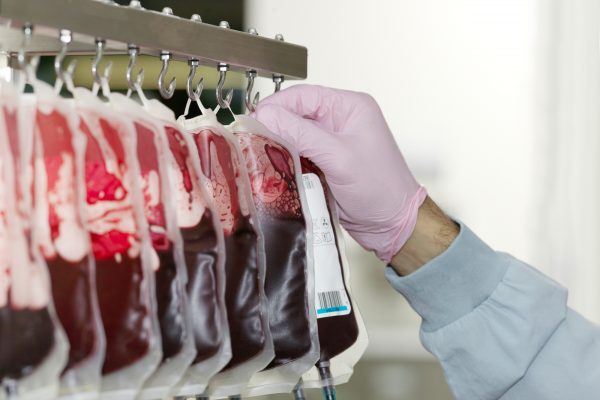
Anaemia is a common symptom of myelodysplastic syndromes (MDS), with many patients becoming transfusion-dependent. Frequent transfusions increases the risk of iron overload which negatively affect survival. Luspatercept, a novel TGF-β superfamily ligand trap, was approved to treat anaemia after erythropoiesis-stimulating agent (ESA)-failure, based on the results of the MEDALIST trial.1,2 The COMMANDS trial was designed to assess efficacy and safety of luspatercept compared to epoetin alfa in ESA-naive patients. The interim analysis of COMMANDS showed superiority of luspatercept in red blood cell transfusion independence and response durability, leading to FDA approval of luspatercept for ESA-naive patients with lower-risk MDS.1,3 While the results were promising, the results of the primary analysis were needed to fully evaluate the efficacy and safety of luspatercept. The primary analysis of COMMANDS has now been reported.4
Methods
COMMANDS is a phase III, open-label, randomised, controlled trial investigating luspatercept versus epoetin alfa in 363 ESA-naive, transfusion-dependent patients with lower-risk MDS. The primary endpoint was the proportion of patients that achieved red blood cell transfusion independence for at least 12 weeks, together with an increase in mean haemoglobin of at least 1.5 g/dL (during weeks 1–24).
Results
After a median follow-up of 17.2 months for the luspatercept group and 16.9 months for the epoetin alfa group, luspatercept resulted in superior efficacy versus epoetin alfa. A significantly greater percentage of patients treated with luspatercept reached the primary endpoint compared to those treated with epoetin alfa (110 [60%] vs 63 [35%], p< 0.0001). Furthermore, an exploratory analysis revealed that the primary endpoint was met more often in patients treated with luspatercept across subgroups of clinical interest, including SF3B1 mutation status, baseline transfusion burden, and serum erythropoietin. In addition, 48% of the patients treated with luspatercept achieved red blood cell transfusion independence for 24 weeks versus 31% of the patients treated with epoetin alfa.
The most common grade 3–4 treatment-emergent adverse events (TEAEs) occurring in the luspatercept arm were hypertension (10%), anaemia (10%), pneumonia (5%), syncope (5%) and neutropenia (5%). Exposure adjusted incidence rates of grade 3-4 TEAEs and exposure adjusted serious TEAEs were respectively 73.8 per 100 person-years and 44.2 per 100 person-years for luspatercept versus 68.3 per 100 person-years and 51.1 per 100-person years for epoetin alfa. Exposure adjusted rates of progression to acute myeloid leukaemia were similar: 2.0 per 100 person-years for luspatercept and 2.5 per 100 person-years for epoetin alfa.
Conclusion
The primary analysis of COMMANDS confirms the efficacy and safety findings of the interim analysis. Significantly more luspatercept-treated patients achieved red blood cell transfusion independence compared to those treated with epoetin alfa, with similar safety results. These results suggest that luspatercept may be the new standard of care for ESA-naive patients with transfusion-dependent lower-risk MDS.
References